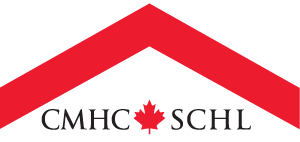Affordability challenges and supply-demand imbalances impact Whitehorse’s housing market
In Whitehorse, 20% of households struggle to afford market housing due to high house prices and increased borrowing costs. In 2023, the Government of Yukon raised the income thresholds for social housing eligibility. However, the availability of social housing units remains limited.
The construction sector has been impacted by labour shortages and rising costs, leading to a drop in housing starts compared to the previous year. Although resale prices in the single-detached market have cooled down from last year's record highs, they remain high. With low vacancy rates and increasing median rents, demand still outpaces supply in the private rental market.
New homebuyers faced steep increases in average monthly housing costs in Yellowknife
Housing affordability is a concern, with 28% of families unable to affordably secure market housing. The vacancy rate for rental units nearly doubled from the previous year. Despite this increase, rental rates have either remained steady or seen a slight increase over the same period.
Average home prices continue to rise even though home sales have dropped compared to the previous year. For example, new homebuyers now face an average monthly cost of $1,834, a significant 14.1% increase from last year.
In terms of construction, 2022 saw a decrease in housing starts but an increase in housing completions.
Iqaluit’s surging population intensifies affordability challenges
Iqaluit is experiencing high population growth, mostly driven by a high birth rate. In fact, Nunavut has had the highest growth rate seen since 2015. Nunavut’s population is one of the youngest in Canada with 31% of its population being below age 15. Even though youth accounts for a large share of the population, it’s the older population that’s growing the fastest. These population dynamics are leading to increased housing demand and highlights the need for more adequate and suitable housing in the area.
In 2022, the average prices of single-detached homes hit a record high, while price growth in the row house and condominium segments were more moderate. However, many households continue to face challenges accessing housing that they can afford and rising borrowing costs have made homeownership less attainable.
Nunavut continues to experience the highest rate of core housing need of any province or territory. The 2021 census reveals that the share of the population in core housing need was 40.5%, down from 47.2% in 2016. Housing quality is the main challenge in the Territory. The share of the population living in housing that was inadequate or unsuitable increased from 2016 to 2021, while the share living in unaffordable housing fell. Demographics disproportionately affected by core housing need include:
- lone-parent households
- Indigenous peoples
- renters
- families with children
The 2023 Northern Housing Report highlights current housing affordability, supply and quality challenges in Whitehorse, Yellowknife and Iqaluit. It also outlines the work being done to address these issues. In addition, the report emphasizes the need for comprehensive strategies to ensure adequate and affordable housing for all residents.
Get more detailed insights into the Territories’ unique housing market conditions.
Download the Report (PDF)






 Share via Email
Share via Email
